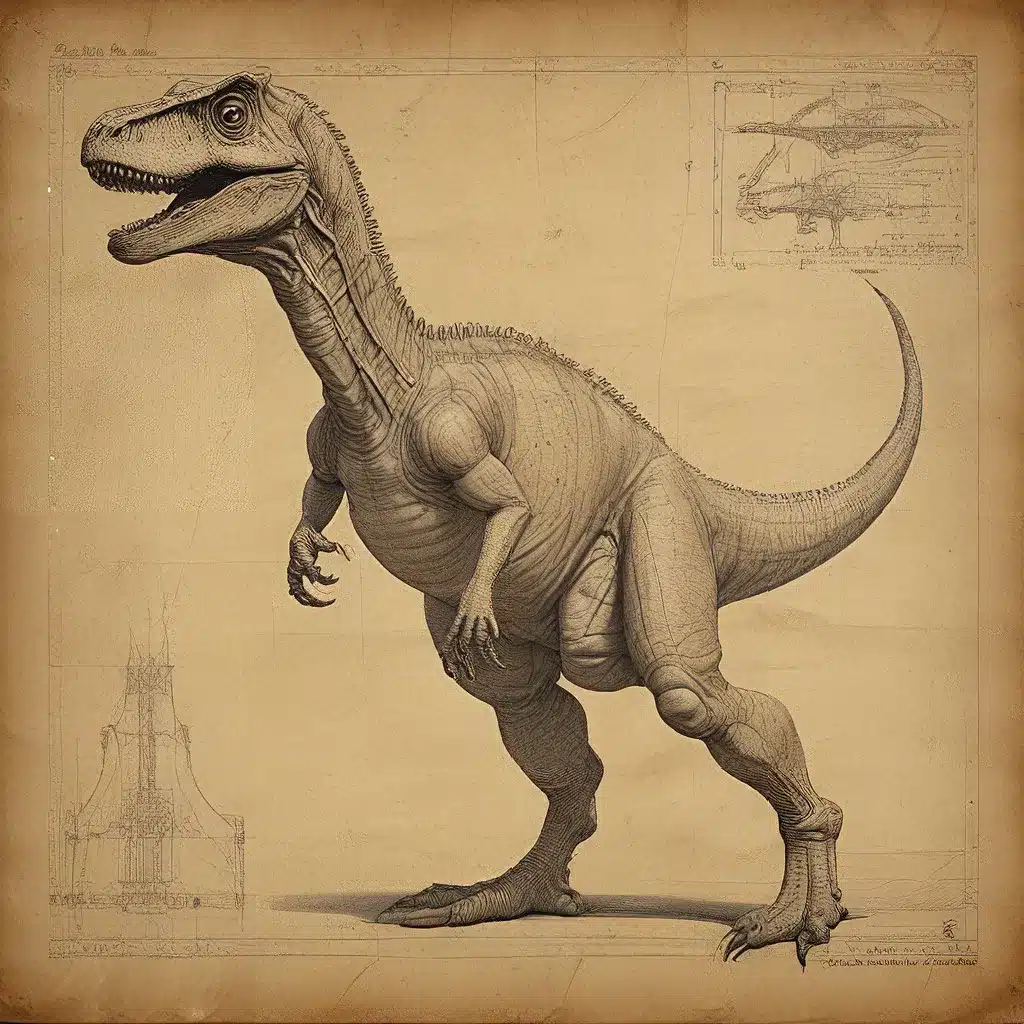
The Enduring Mysteries of Dinosaur Architecture
The dinosaur era, spanning the Triassic, Jurassic, and Cretaceous periods, was a time of unparalleled evolutionary innovation and architectural marvels. These extinct reptiles left behind a treasure trove of clues, hidden within the very fabric of their skeletal structures and fossilized remains, that continue to captivate paleontologists and archaeologists alike.
One of the most intriguing aspects of dinosaur biology is the remarkable diversity of their body plans and skeletal configurations, which served as the foundation for their remarkable adaptations and survival strategies. From the towering, long-necked sauropods to the fearsome, carnivorous theropods, each species developed unique skeletal traits and biomechanical features that enabled them to thrive in their respective environments.
Geological evidence suggests that the rise and fall of these ancient reptiles were shaped by a complex interplay of environmental factors, including climate change, tectonic activity, and mass extinction events. As researchers delve deeper into the fossil record, they are uncovering new insights into the adaptations and survival strategies employed by these remarkable creatures.
Uncovering the Architectural Secrets of Dinosaur Skeletons
One of the most intriguing aspects of dinosaur skeletal anatomy is the intricate network of bones, joints, and ligaments that formed the foundation of their diverse body plans. By studying the structural characteristics of these skeletal elements, paleontologists have been able to reconstruct the biomechanics and locomotion patterns of various dinosaur species.
For example, the long, slender limb bones of the sauropods suggest that these massive herbivores relied on efficient, low-energy gaits to traverse their expansive habitats. In contrast, the robust, muscular limb bones of the theropods indicate that they were capable of explosive bursts of speed and agility to hunt their prey.
Recent advancements in medical imaging technology have also allowed researchers to analyze the internal structure of dinosaur bones, revealing insights into their growth patterns, stress-bearing capabilities, and even the presence of rare pathologies. These findings have been instrumental in reconstructing the lives and behaviors of these ancient reptiles.
Architectural Innovations in Dinosaur Skeletal Design
Dinosaur skeletons also showcase remarkable architectural innovations that allowed these creatures to thrive in a variety of environments. One of the most notable examples is the pneumatic skeletal system found in many dinosaur species, which featured hollow, air-filled bones that reduced the overall weight of the skeleton while maintaining structural integrity.
This lightweight, yet robust skeletal design enabled dinosaurs to grow to immense sizes, with some sauropod species reaching lengths of over 100 feet and weighing tens of tons. The pneumatic bones also played a crucial role in the respiratory systems of these massive creatures, allowing for efficient air flow and oxygen exchange.
Another impressive architectural feature of dinosaur skeletons is the complex network of joints and ligaments that facilitated a wide range of motion and flexibility. This allowed dinosaurs to adapt to various environmental challenges, such as navigating rugged terrain, defending against predators, and even engaging in complex social behaviors.
Ongoing research into the biomechanics of dinosaur skeletons continues to shed light on the engineering principles that guided the evolution of these ancient reptiles, providing valuable insights into the design strategies employed by nature over millions of years.
Uncovering the Architectural Secrets of Dinosaur Nesting and Breeding
In addition to the remarkable adaptations of their skeletal structures, dinosaurs also displayed innovative architectural techniques in their nesting and breeding behaviors. The discovery of numerous dinosaur nesting sites has revealed intricate details about the construction methods and environmental considerations employed by these ancient reptiles.
For instance, many species of theropod dinosaurs, such as the Oviraptor, were found to have constructed complex, multi-chambered nests that provided optimal conditions for egg incubation and hatchling development. These nests often featured carefully arranged materials, such as vegetation, soil, and even rocky fragments, to regulate temperature, humidity, and predator protection.
The brooding behaviors of some dinosaur species also showcase their architectural prowess, with evidence suggesting that certain theropod and sauropod species actively tended to their nests and hatchlings, providing parental care and protection during the vulnerable early stages of life.
Unlocking the Secrets of Dinosaur Architecture: The Path Forward
As our understanding of dinosaur biology and behavior continues to evolve, the study of their architectural marvels has become an increasingly important area of research. By deciphering the structural complexity and engineering principles behind these ancient reptiles, paleontologists and archaeologists are not only shedding light on the past, but also inspiring innovative solutions for the challenges of the present and future.
Through the continued exploration and analysis of dinosaur fossils, as well as the integration of cutting-edge technologies and interdisciplinary approaches, we are poised to unravel even more of the enduring mysteries that surround these remarkable creatures and their extraordinary architectural legacies.
The Lost Kingdoms blog is dedicated to sharing these captivating stories, providing readers with a deep dive into the fascinating world of dinosaur architecture and the insights it offers into the resilience and adaptability of life on our planet.


